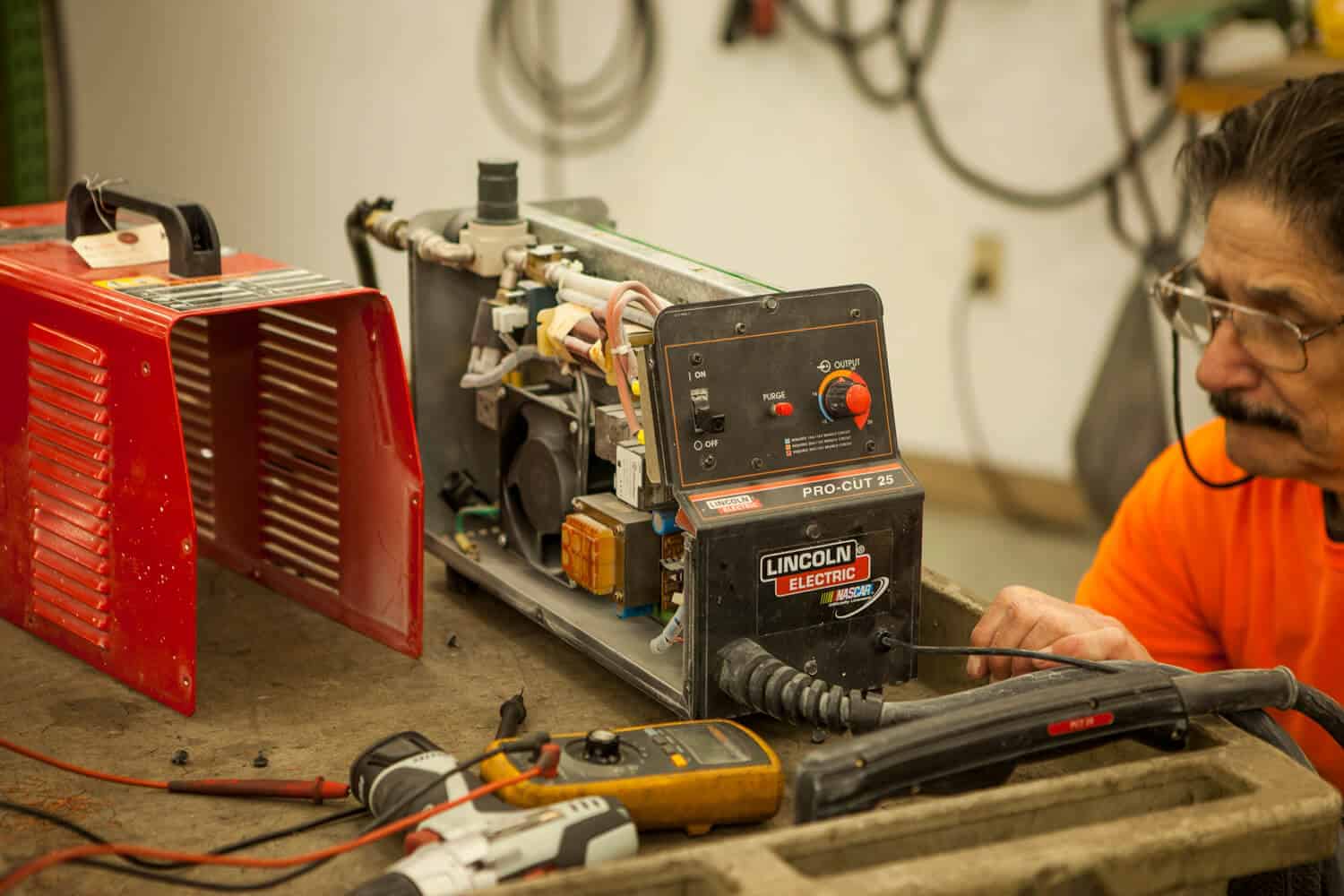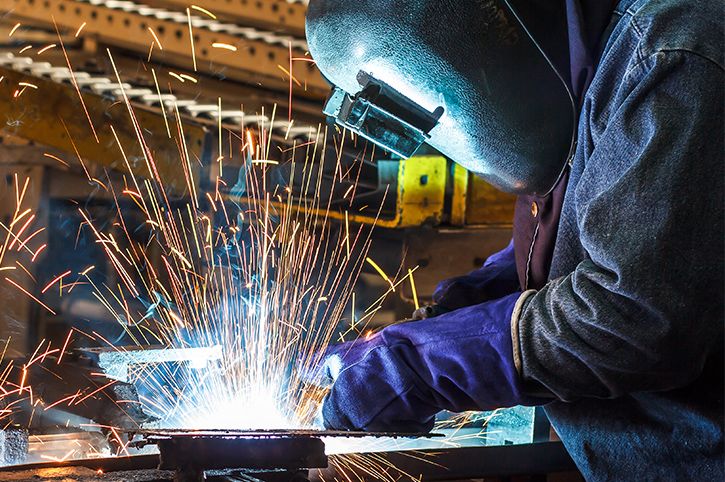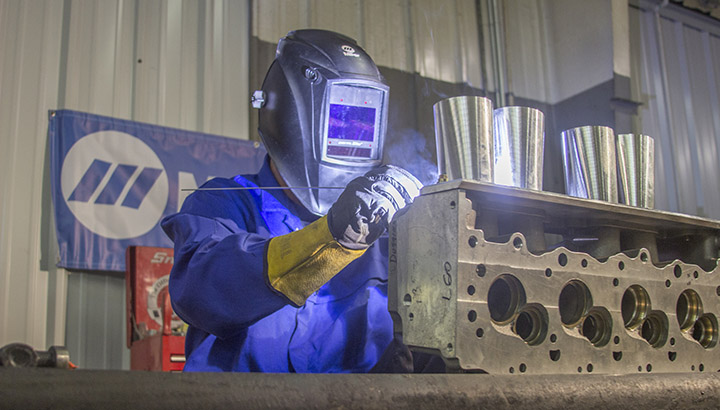Common Welding Repair Issues and How to Address Them Efficiently
Welding repair services frequently experience a range of concerns that can jeopardize the integrity of the last item. Common issues consist of inadequate infiltration, porosity, and imbalance, to name a few. Each defect offers distinct difficulties that need specific approaches for resolution. Understanding these issues is necessary for welders intending to boost their skills and outcomes. This discussion will certainly check out these usual welding repair service concerns and reliable approaches to address them.
Inadequate Penetration
Poor infiltration occurs when the weld steel falls short to totally fuse with the base product, resulting in weak joints and prospective structural failings. This issue typically comes from inadequate warm input, incorrect electrode angle, or inappropriate welding speed. Welders might run into poor infiltration due to a miscalculation of the required criteria for a particular product density or kind. Furthermore, contamination on the base product's surface area can prevent reliable bonding, exacerbating the issue. To deal with poor infiltration, welders need to guarantee suitable settings on their tools and preserve a clean job surface. Routine examination of welds is advised to identify any deficiencies early, allowing for timely adjustments and the prevention of endangered structural honesty in welded settings up.
Porosity
Porosity is a typical flaw in bonded joints that manifests as tiny gas bubbles caught within the weld steel. This issue can jeopardize the stability of the weld, resulting in reduced strength and prospective failing under stress and anxiety. Fabrication. Porosity commonly occurs from contamination, wetness, or inappropriate welding techniques, which allow gases to leave right into the liquified weld pool. To attend to porosity, welders need to ensure appropriate surface area preparation, preserve a clean functioning setting, and use ideal welding parameters. Additionally, selecting the best filler material and securing gas can mitigate gas entrapment. Regular assessment and testing of welds can aid identify porosity early, ensuring timely corrective actions are taken, thereby preserving the high quality and integrity of the bonded framework
Imbalance
Imbalance in welding can arise from numerous factors, consisting of inappropriate arrangement and thermal development. Recognizing the root creates is necessary for effective resolution. Numerous adjustment strategies are offered to straighten components and ensure architectural stability.
Reasons for Imbalance
Welding imbalance commonly stems from a range of underlying concerns that can compromise structural integrity. One main reason is inappropriate fit-up of parts before welding, which can bring about voids and unequal surface areas. Variations in thermal development throughout the welding process can also lead to distortion, specifically if the materials being joined have various coefficients of growth. Furthermore, insufficient securing and fixturing might fail to hold components firmly in position, resulting in movement during welding. Poorly maintained equipment, consisting of welding machines and devices, may introduce disparities in the weld bead, more adding to imbalance. Operator error, stemming from inadequate training or experience, can additionally play a considerable duty in producing misaligned welds.

Adjustment Methods Available
Dealing with misalignment effectively needs a combination of rehabilitative strategies customized to the details issues at hand. One common approach is the usage of components or jigs to hold elements in the proper placement during welding, making sure consistent positioning. Furthermore, preheating the products can help in reducing distortion and improve fit-up. For significant misalignment, mechanical adjustment methods, such as utilizing hydraulic jacks or clamps, can be used to deal with the position before welding. Post-weld warm therapy may likewise be required to eliminate tensions brought on by imbalance. Mindful inspection and adjustment throughout the arrangement stage can avoid imbalance concerns from ending up being considerable problems, advertising a smoother welding procedure and enhancing general structural honesty.
Distortion
Distortion is a typical difficulty in welding that can develop from various elements, consisting of irregular heating & cooling. Recognizing the sources of distortion is necessary for executing effective avoidance strategies. Resolving this issue not just enhances structural integrity however additionally boosts the total top quality of the weld.
Root causes of Distortion
When based on the extreme warmth of welding, materials typically undergo adjustments that can result in distortion. This phenomenon mostly emerges from thermal growth and tightening throughout the welding process. As the weld area warms up, the product broadens; upon air conditioning, it gets, which can produce inner stress and anxieties. Furthermore, uneven home heating across a workpiece can intensify these anxieties, resulting in warping or bending. The sort of product likewise plays a substantial duty; metals with differing thermal conductivity and coefficients of development may react in a different way, bring about unpredictable distortions. Poor joint design and poor fixturing can add to misalignment throughout welding, raising the chance of distortion. Understanding these causes is vital for efficient welding repair work and avoidance approaches.
Prevention Techniques
Reliable prevention strategies for distortion during welding concentrate on controlling heat input and ensuring appropriate joint style. Keeping a constant heat input assists to reduce thermal growth this post and contraction, which can result in distortion. Using strategies such as pre-heating the workpiece can additionally reduce the temperature gradient, advertising uniform heating. Furthermore, picking proper joint designs, such as T-joints or lap joints, can enhance stability and reduce stress and anxiety concentrations. Implementing appropriate fixturing to protect the work surfaces in position additionally aids in keeping placement during the welding process. Ultimately, staggered welding series can disperse warmth more uniformly, protecting against localized distortion. By using these strategies, welders can considerably lower the probability of distortion and enhance the overall top quality of their welds.
Splitting
Breaking is a common problem experienced in welding repairs, commonly resulting from different aspects such as incorrect cooling prices, product option, or inadequate joint prep work. The incident of fractures can significantly jeopardize the stability of the weld, causing possible failures throughout operation. To address this concern, welders should initially assess the origin causes, making certain that products work and appropriately picked for the details application. Furthermore, controlling the cooling rate during the welding procedure is important; rapid air conditioning can cause tension and bring about fracturing. Appropriate joint layout and prep work additionally add to reducing the risk. Implementing these methods can enhance weld quality and durability, inevitably reducing the chance of splitting in finished weldments.

Insufficient Blend
A considerable concern in welding fixings is insufficient blend, which happens when the weld metal does not sufficiently bond with the base material or previous weld passes - Montana Mobile Welding and Repair Fabrication. This defect can bring about weaknesses in the joint, potentially endangering the honesty of the welded structure. Variables adding to insufficient blend include inadequate warmth input, improper welding technique, and contamination of the surfaces being signed up with. To address this problem effectively, welders must assure appropriate pre-weld cleansing and surface prep work, along with readjust their welding parameters to achieve adequate infiltration and fusion. Regular evaluation during the welding procedure can also help identify incomplete fusion early, enabling prompt rehabilitative procedures to boost the general high quality of the weld
Overheating
While welding repairs can improve architectural stability, overheating provides a significant difficulty that can result in product degradation. Excessive warmth throughout welding can change the mechanical residential properties of steels, leading to reduced strength, raised brittleness, and warping. This phenomenon is specifically crucial in high-stress applications where architectural reliability is extremely important. Determining getting too hot can include aesthetic examinations for discoloration or distortion, in addition to keeping an eye on temperature throughout the welding process. To mitigate the risks connected with overheating, welders need to employ suitable techniques, such as managing warmth input, readjusting travel speed, and using suitable filler materials. Additionally, executing pre- and post-weld warmth treatments can aid recover material homes and enhance the overall high quality of the repair work, making certain lasting performance and welding stainless steel to mild steel safety and security.
Frequently Asked Inquiries
What Are the Usual Indications of a Welding Flaw?

How Can I Test My Welds for Top quality?
To check welds for high quality, one can utilize visual inspections, ultrasonic testing, and radiographic techniques. Each technique ensures architectural honesty, identifies issues, and verifies adherence to defined criteria, ultimately improving the reliability of the welded joints.
What Safety and security Preventative Measures Should I Take While Welding?
When welding, one need to prioritize security by putting on ideal individual safety tools, ensuring appropriate air flow, safeguarding flammable materials away, preserving a tidy work area, and recognizing surroundings to stop accidents and injuries.
Can I Repair a Weld Without Renovating the Entire Joint?
Repairing a weld without redoing the whole joint is feasible, depending upon the damages (Montana Mobile Welding and Repair). Methods such as grinding, adding filler material, or making use of a welding process can properly deal with specific imperfections while maintaining the bordering structure
What Devices Are Necessary for Effective Welding Repairs?
Necessary devices for reliable welding repair services consist of a welding machine, cord brush, grinder, safety gear, clamps, and filler products. Each tool plays an important duty in ensuring quality and security throughout the fixing process. Porosity usually emerges from contamination, moisture, or incorrect welding strategies, which permit gases to get away right into the molten weld pool. Inadequately conserved devices, consisting of welding equipments and devices, might introduce inconsistencies in the weld bead, more adding to misalignment. When subjected to the intense heat of welding, products commonly undertake adjustments that can lead to distortion. Breaking is a common problem run into in welding repairs, frequently resulting from numerous variables such as improper air conditioning prices, product selection, or poor joint preparation. A significant concern in welding repair services is insufficient combination, which occurs when the weld metal does not properly bond with the base product or previous weld passes.